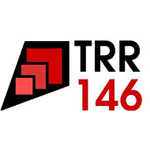
Seminar über Theorie der kondensierten Materie / TRR146 Seminar
Jan. 30, 2025 at
2:30 p.m.
in
Minkowski-Raum, 05-119, Staudingerweg 7
and via
Zoom
F. Schmid
friederike.schmid@uni-mainz.de
P. Virnau
virnau@uni-mainz.de
L. Stelzl
lstelzl@uni-mainz.de
Circuits of Microfluidic Memristors: Computing with Aqueous Electrolytes
René van Roij (Prof. Dr.)
Title: Circuits of Microfluidic Memristors: Computing with Aqueous Electrolytes
Speaker: René van Roij, Institute for Theoretical Physics, Utrecht University, The Netherlands
Abstract: In this online talk we will discuss recent advances in our understanding of the physics of
cone-shaped microfluidic channels under static and pulsatile voltage- and pressure drops. On the
basis of Poisson-Nernst-Planck-Stokes equations for transport of aqueous electrolytes through
channels carrying a surface charge, we will provide a theoretical explanation for the experimentally
observed diode-like current rectification of these channels. At steady electric driving this
rectification involves salt depletion or accumulation in the channel depending on the sign of the
applied voltage [1], and this effect also explains the observed pressure-sensitivity of the electric
conductance. An extension towards an applied AC voltage predicts these channels to be tunable
between diodes at low frequencies ωτ<<1, memristors (resistors with memory) at intermediate
frequencies ωτ ~ 1, and Ohmic resistors at high frequency ωτ>>1 , with a characteristic (memory
retention) time τ proportional to the square of the channel length [2]. We predict that Hodgkin-
Huxley-inspired iontronic circuits of short (fast) and long (slow) conical channels yield neuromorphic
responses akin to (trains of) action potentials [2] and several other neuronic spiking modes [3]. Next,
we show theoretically and experimentally that a tapered microfluidic channel filled with an aqueous
nearly close-packed dispersion of colloidal charged spheres is a much stronger memristor than the
channel with only surface charges on the channel wall [4]. Upon applying a train of four positive
(negative) voltage pulses, each pulse representing a binary “1” (“0”), we map the hexadecimal
number represented by this train on an analog channel conductance, which offers opportunities for
reservoir computing -we give a proof of principle for the case of recognizing hand-written digits [4].
Finally we will also discuss recent and ongoing work on iontronic information processing. We exploit
the mobility of the medium (water) by considering simultaneously applied pulsatile pressure and
voltage signals to increase the bandwidth [5]. Finally, the versatile ionic nature of the charge carriers
allows for Langmuir-like ionic exchange reaction kinetics on the channel surface [6]. We show that
this can give rise to direct iontronic analogues of synaptic long-term potentiation and coincidence
detection of electric and chemical signals [7], which are both ingredients for brain-like (Hebbian)
learning.
References:
[1] W.Q. Boon, T. Veenstra, M. Dijkstra, and R. van Roij, Pressure-sensitive ion conduction in a conical
channel: optimal pressure and geometry, Physics of Fluids 34, 101701 (2022).
[2] T.M. Kamsma, W.Q. Boon, T. ter Rele, C. Spitoni, and R. van Roij, Iontronic Neuromorphic
Signaling with Conical Microfluidic Memristors, Phys. Rev. Lett. 130, 268401 (2023).
[3] T.M Kamsma, E. A. Rossing, C. Spitoni, and R. van Roij, Advanced iontronic spiking modes with
multiscale diffusive dynamics in a fluidic circuit, Neuromorph. Comput. Eng. 4 024003 (2024).
[4] T.M. Kamsma, J. Kim, K. Kim, W.Q. Boon, C. Spitoni, J. Park, and R. van Roij, Brain-inspired
computing with fluidic iontronic nanochannels, PNAS 121, e23202242121 (2024).
[5] A. Barnaveli, T.M. Kamsma, W.Q. Boon, and R. van Roij, Pressure-gated microfluidic memristor for
pulsatile information processing, arXiv:2404.15006.
[6] W.Q. Boon. M. Dijkstra, and R. van Roij, Coulombic Surface-Ion Interactions Induce Nonlinear and
Chemistry-Specific Charging Kinetics, Phys. Rev. Lett. 130, 058001 (2023).
[7] T.M. Kamsma, M. Klop, W.Q. Boon, C. Spitoni, and R. van Roij, arXiv:2406.03195